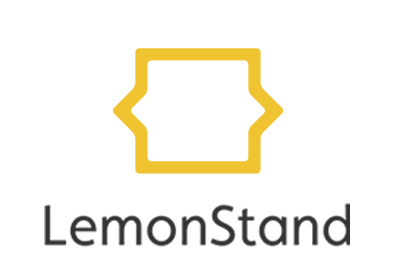Interview with Vern Imrich, CTO of Percussion

For this month's newsletter, we spoke with Vern Imrich, CTO of Percussion to get his thoughts on the growth of the CMS market and more. Read on for some valuable insights.
CC: Please tell us a bit about yourself and your background leading up to working with Percussion.

VI: My formal training and degrees are all in engineering, numerical methods and computer simulations. But all along I was heavily involved in publications, running engineering magazines and other periodicals. I became a pro at SGML, desktop publishing systems, and even typesetting languages. Then, while in graduate school at MIT, SGML suddenly became HTML and the Web exploded onto the scene. I ditched the numerical simulation code and grad school altogether and went full time to the Web, building sites, doing web applications. When I arrived at Percussion in the mid 90's, it was a “data to documents” company looking for a new market to expand in. I spurred the company's move to the Web, and by 1999 we had adopted XML as our new core technology. We quickly saw the core value proposition for this technology as helping companies publish web sites and web content quickly and cost effectively, and released our first Web Content Management System in the spring of 2000. There have been many ups and downs as the Web bubble burst, morphed several times over, was reborn with Web 2.0 and into the social media explosion of today. My experience combining the technical rigor of engineering with the free form creative processes of content publishers and editors has allowed me to guide Percussion to keep pace with the Web market all throughout.
CC: What makes Percussion a strong option for companies to consider in the market?
VI: What we hear from our customers and prospects is that they choose our software because its highly usable, and because we deliver functionality as a product (rather than a set of complex customizations) which make our product supportable, flexible and upgradeable. This is a fundamentally different way to deliver the CMS than what you are hearing from other vendors in the market that require far more customization services. And we offer everyone a cloud-based evaluation to prove that the demo they just saw is really out of the box functionality. If I may say, it’s really a sad commentary on the state of the CMS market that prospects are often jaded by knowing that the sexy demo’s they see so often are really just “demo-ware.” They know that the vendors show up to their kick-off with nothing more than a bag of parts and a large consulting contract.
We think there is fundamentally a better way to manage your content, drive customer engagement, and manage your content marketing. We believe that simplifying all of that complexity into a highly usable out-of-the-box product that marketers and content owners can actually use to get their job done, CM1 solves a fundamental need and drives a real business outcome. If companies can’t use their web efforts to scale their business, then they are missing out on revenue. Our products breakthrough that wall.
CC: What do you feel was your greatest technical achievement over the last two years?
VI: Without a doubt the CM1 user experience is the key breakthrough that we are most proud about and the one that our customers love us for. “Finally,” they tell us, “something that we can actually use!” Believe it or not, we just had a prospect tell us during a demo that they felt like a caveman staring at fire for the first time! Now not sure we should go THAT far, but it’s definitely been a major breakthrough.
And we really believe that user experience is not about how pretty the interface looks (though we know that ours is pretty sexy looking!). We know that design can be fleeting, you can refresh how your product looks at any time, and many vendors have, but we took the time to completely rearchitect how you use the product based on how users actually want to do work. And by users, we mean the people actually managing the content, not the technical team in charge of the app.
This is a real breakthrough in user experience. It puts the power over the content back in the hands of the content owner. It creates flexibility, allows marketers to be more agile in their activity, and gives them the flexibility to take on whatever comes next.
Further the dashboard creates a comprehensive connection between analytics and action. Now teams can go from simply reading and reporting on the analytic data to a much more powerful “Read and Act” in the moment based on what’s working, or what’s trending in the market.
CC: From a technical standpoint, how does Percussion fare for customers with multiple infrastructure types within their corporate landscape?
VI: Our core DNA since we first launched WCM back in 2000 has always been as a decoupled system. Even as we add delivery-tier services like dynamic tagging and categorization, comments, ratings, personalization etc we treat the architecture the same and keep them decoupled. This creates limitless flexibility for our customers with their infrastructure and existing applications. Move to the cloud? No problem. Integrate with a custom built delivery side database? No problem. Integrate CRM or ERP or Marketing Automation connections? Also no problem.
And as important, because we don’t require you to change your current web infrastructure, you don’t have to redesign or re-architect your site to use our product. This is a key driver for many organizations that have heavy investments in their web technologies.
CC: A fair portion of the code utilized for Percussion was derived from Open Source projects; What was the reason for choosing to build off of these projects?
VI: As with any software initiative, we know what we are good at. And where things exist already that can be leveraged to deliver a high quality experience, we would rather start there than build it ourselves. We are constantly looking for ways to expand our use of Open Source because it frees our technical team to focus on what we do best.
CC: How has Percussion given back to the open source community?
VI: We do publish our common code back to the community, but a lot of where we innovate involves pulling together all this great technology in such a way that folks can use it easily and cheaply. In other words, we're often the “last mile” to the user, so the code we publish tends to be widgets, gadgets and other plug-ins for our WCM offering. Still, we're always looking for areas where we can share more.
CC: For customers looking to integrate with multiple third party applications such as Salesforce and ERP solutions, how does Percussion fit in?
VI: As I mentioned earlier, our hallmark has always been our ability to integrate with other applications that our customers use. Some of our most successful customers like Autotrader.com, Weather.com and BabyCenter.com have really complicated applications running their business. They appreciate our ability to easily connect to those systems.
We take a classic widget/gadget approach to integrating applications like SalesForce which allows us to frequently add new integrations either on client demand, or because we know they will be popular. Soon, we will also extend the capability to create new Widgets or Apps to our key development partners and will deploy them in an App-Store type model. This is a really exciting development because you gain true network momentum as more and more people come on line with CM1 and CM1 widgets, gadgets and Apps.
CC: Can you give us a preview of what we can expect from upcoming releases of the software?
VI: We hear from our prospects all the time that they have a very hard time managing their content and driving a true content marketing strategy with their current technologies. However, they can’t always get their senior team to understand why that matters. Some of the near term things being rolled out as part of our advanced content marketing dashboard will draw a much cleaner picture for executives on what kind of value they are getting from their content operations. By exposing data about how content is turning into revenue, or even reducing costs, we change the dynamic from “my job is hard, this will help me do it better” (which sadly is never a winning business case) to a “here is where we are driving value to the business.”
I already mentioned the concept of an App Store. This will be a really exciting development in the coming months as well.
CC: Do you have any parting comments or final thoughts?
VI: You know, I would just say that historically people thought of one-size-fits-all WCM. It was really complex, and it was really hard, and it was really expensive. Smaller companies aspired to afford it, but it was always the domain of the monied class. But we are seeing a widescale revolt against complexity. Users just want something that works, and preferably works now. And smaller companies are realizing they can get full-functioning content systems in an affordable package, they don’t need to suffer in silence any longer.
CC: Thank you for your time Mr. Imrich.